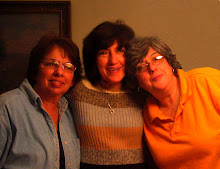
I've been growing fresh basil and oregano on my patio this summer. Last evening, I found myself struggling with what to make for dinner. I was positive about one thing: I did not feel like a trip to the grocery store. So, I improvised and now I'm passing the recipe on to you!
Farfalle with Fresh Basil and Tomatoes
Ingredients
1 lb. of Farfalle (bowties)
3-4 medium sized fresh tomatoes (cut to 1/8" slices)
1/2 cup grated Parmesan cheese
a bunch of fresh basil
Pepper to taste
Extra-virgin olive oil (or canola if you prefer)
Chef's Disclaimer: Again, I'm sorry for the lack of measurements. I find writing recipes harder than cooking because I'm used to "winging it." I love spices, so I tend to be heavy handed with them, but you are welcome to adjust things to your own taste. As far as I'm concerned, recipes are guides and individuals should be able to customize them to their pleasure.
Directions
Preheat oven to 350 degrees.
Bring a large pot of salted water to boil and add the farfalle. (Do not thoroughly cook as this dish will end up finishing in the oven.) While the pasta is still a bit "crunchy," remove and drain well.
I have a great 2-1/2 quart stoneware baking dish that works perfectly with this recipe. That's the attitude you're looking for here. Sprinkle the bottom with oil and put down a layer of sliced tomatoes, followed by a layer of basil (about 8 medium-large leaves, spread out), pepper, and parmesan cheese. Then, lay down a layer (about half) of farfalle pasta and repeat the process (tomatoes-basil-pepper-parmesan). Do it one more time so that you have essentially two layers of pasta. The top layer should be the tomatoes, the basil, the pepper and parmesan.
Once assembled, cover with aluminum foil and place in the oven. Cook for 20-25 minutes. Remove from oven and serve with shaved parmesan and crushed red pepper flakes.




